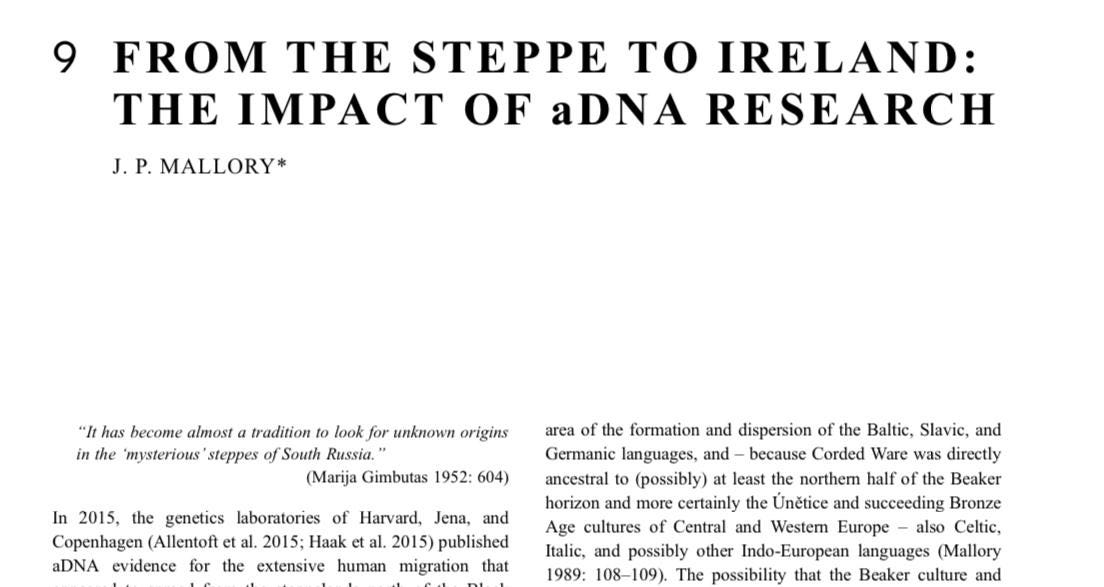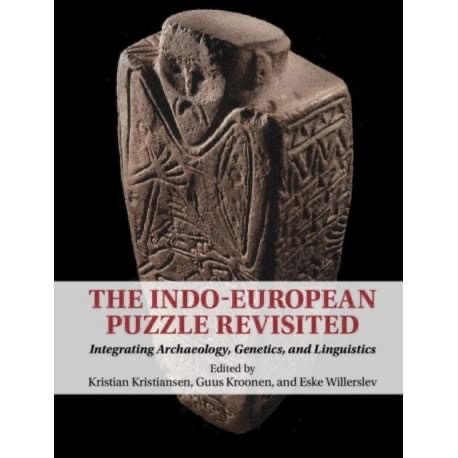How mythological history (sometimes) tracks actual history
Part 1.
⚡️”There are inevitably those [@DecodingTrolls is guilty as charged] who regard Irish traditional history, primarily narrated in the Lebor Gabála Erenn "Book of Takings of Ireland," as containing relic remembrances of Ireland's prehistoric past.
So it is best to acknowledge outright that the traditional medieval account does trace the Irish language back to the descendants of Nemed, who led an attempt to colonize Ireland from the steppelands of Scythia ca. 2350 BCE (LGE 273), i.e. that the Irish originated in the steppelands and arrived in Ireland at the same time as the Beakers.
It should be emphasized that this legend derives from the medieval narrative that all the peoples of Europe descended from Japhet, the son of Noah, whose staging area for European dispersals was Scythia.
Hence, Scythia (Ukraine and southern Russia) in effect became the equivalent of the Indo-European homeland in discourse long before the "official" recognition of the Indo-European language family.
The German polymath Leibnitz, for example, derived the Indo-European languages from Scythia. Moreover, the chronology adduced has nothing to do with the Beakers, but is a product of the synchronization of Irish prehistorical events against early world chronicles, calculated with respect to the creation of the world in the year 5199 BCE and the date of the Deluge…”
J.P. Mallory1 (https://scholar.google.com/scholar?hl=en&as_sdt=0%2C5&q=J.P.+Mallory&btnG=)
Interesting to note, as Stephen Komarnyckyj‘a magisterial translation of Ukrainian academic and scientist Georgii Chornyi’s brilliant “Who are we Ukrainians?” demonstrates, it’s a matter of historical fact that the ice melting from the last Ice Age breached the Bosphorous channel and the Pontic Lake flooded southern Ukraine and the Black Sea was born.
This deluge and flood was mythologised again and again in Indo-European stories, as well as in the Biblical accounts of our civilisation’s origins. Byzantine time began at the moment of the Deluge around 5,199 BCE as they dated it.
Thereby pushing migrants north along the Danube, Don Istris (Dniester), Don Hyper (Dnieper), Donets, and Don rivers of Ancient Ukraine.
Those migrants eventually, around the interaction zone south of Zaporzhzhia city, would become the Yamnaya who spread their Indo-European language, culture, religion, technological innovation (wheeled carts, nomadic pastoral economy), and patriarchal mode of social organisation from Ireland to India.
Everything from Greek language, culture and religion to Latin and the Roman and Iranian (Achmeniad) empires flows through the Indo-European operating system created by the Ancient Ukrainians.
Linguists and Archaeologists have long ago deduced this. And advances in Archaeogenetics since 2015 provide an independent source of verifiable proof.
The M-N- sound I have been following across Indo-European culture, language and geographies of our Indo-European world (and reporting in https://www.PowerofMana.net) is yet another trajectory of proofing for what linguistic, archaeogenetic, religious/mythology/story-based, and archaeology tell us about our origins in Ancient Ukraine.
Mallory JP. From the Steppe to Ireland: The Impact of aDNA Research. In: Kristiansen K, Kroonen G, Willerslev E, eds. The Indo-European Puzzle Revisited: Integrating Archaeology, Genetics, and Linguistics. Cambridge University Press; 2023:129-145.










